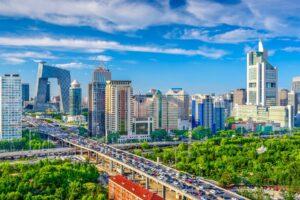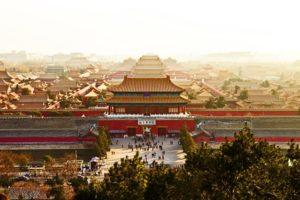Fodor's Expert Review Thirteen Ming Tombs
A narrow valley just north of Changping is the final resting place for 13 of the Ming Dynasty's 16 emperors (the first Ming emperor was buried in Nanjing; the burial site of the second one is unknown; and the seventh Ming emperor was dethroned and buried in an ordinary tomb in northwestern Beijing). Ming monarchs once journeyed here each year to kowtow before their clan forefathers and make offerings to their memory. These days, few visitors can claim royal descent, but the area's vast scale and imperial grandeur do convey the importance attached to ancestor worship in ancient China. A leisurely stroll down the Sacred Way, inspecting the series of charming larger-than-life statues of imperial officials and animals, is a wonderful experience. Many visitors combine a stop here with an excursion to the Badaling section of the Great Wall, which is found off the same expressway.
Beyond the entrance to the Thirteen Ming Tombs complex, the Shendao (or Sacred Way)... READ MORE
A narrow valley just north of Changping is the final resting place for 13 of the Ming Dynasty's 16 emperors (the first Ming emperor was buried in Nanjing; the burial site of the second one is unknown; and the seventh Ming emperor was dethroned and buried in an ordinary tomb in northwestern Beijing). Ming monarchs once journeyed here each year to kowtow before their clan forefathers and make offerings to their memory. These days, few visitors can claim royal descent, but the area's vast scale and imperial grandeur do convey the importance attached to ancestor worship in ancient China. A leisurely stroll down the Sacred Way, inspecting the series of charming larger-than-life statues of imperial officials and animals, is a wonderful experience. Many visitors combine a stop here with an excursion to the Badaling section of the Great Wall, which is found off the same expressway.
Beyond the entrance to the Thirteen Ming Tombs complex, the Shendao (or Sacred Way) passes through an outer pavilion and between rows of stone sculptures depicting elephants, camels, lions, and mythical beasts that scatter the length of its 7-km (4½-mile) journey to the burial sites. This walk is not to be missed and is a route that was once reserved only for imperial travel.
The spirit way leads to Changling, the head tomb built for Emperor Yongle in 1427. The designs of Yongle's great masterpiece, the Forbidden City, are echoed in this structure.
Changling and a second tomb, Dingling, were rebuilt in the 1980s and opened to the public. Both complexes suffer from over-restoration and overcrowding, but they're worth visiting if only for the tomb relics on display in the small museums at each site. Dingling is particularly worth seeing because this tomb of Emperor Wanli is the only Ming Dynasty tomb that has been excavated. Unfortunately, this was done in 1956 when China's archaeological skills were sadly lacking, resulting in irrecoverable losses. Nonetheless, it's interesting to compare this underground vault with the tomb of Emperor Qianlong at Qingdongling.
Picnics amid the ruins have been a favorite weekend activity among Beijingers for nearly a century; if you picnic here, be sure to carry out all trash.
READ LESS







